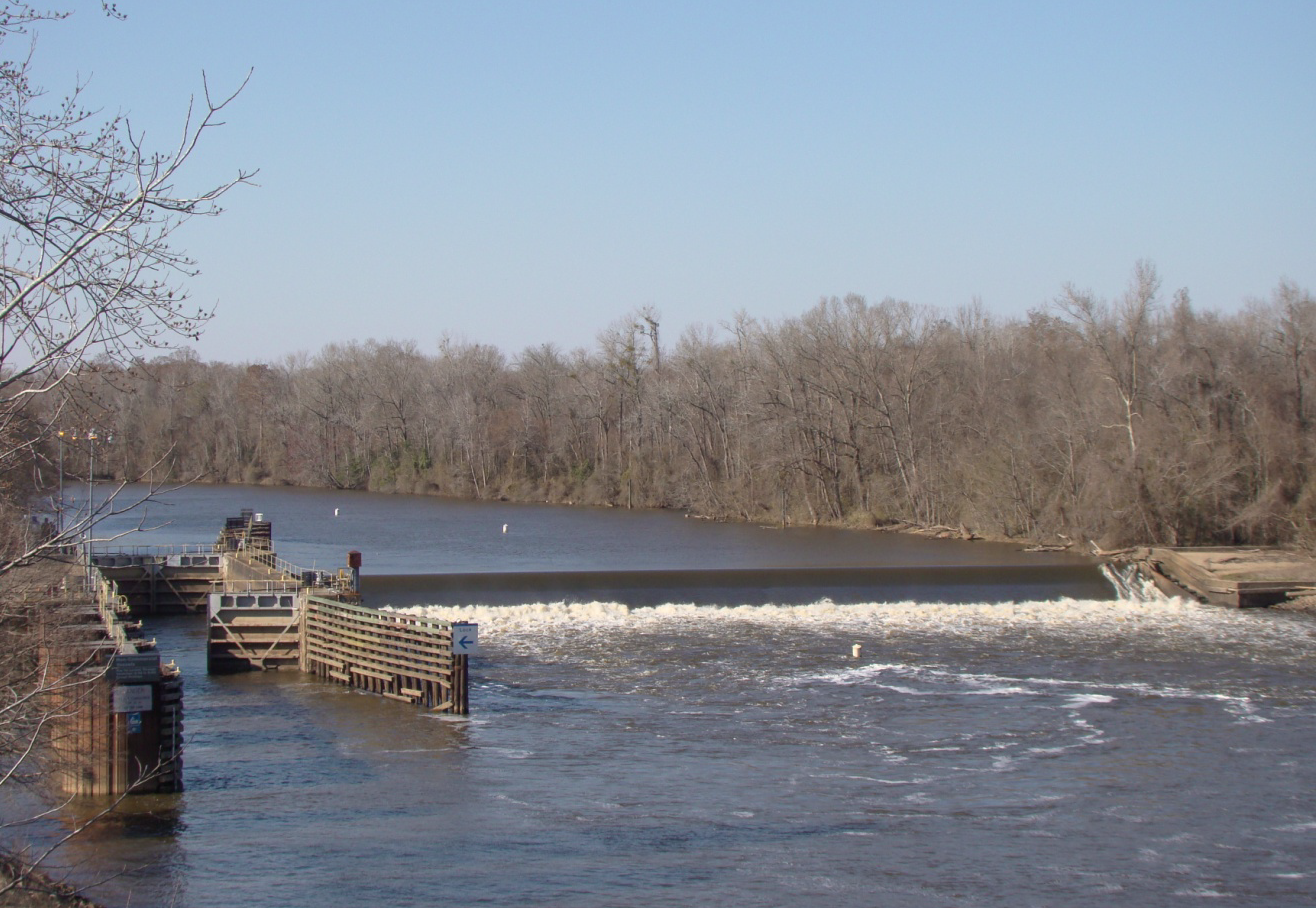Can Migrating Fish Bypass Dams and Locks?

Yes, by using “fishways” — but with varying degrees of success.
As fall’s temperatures begin to drop, our fishing heats up along coastal North Carolina. Red drum, spotted seatrout, and striped bass are some of the more common catches. In fact, according to the N.C. Division of Marine Fisheries, anglers land more large striped bass in North Carolina than in any other state during the winter.
Migrating striped bass winter in our sounds and bays, then begin their move upriver come spring. Dam removals and fish passage improvements are encouraging greater numbers of fish upstream, but what engineering designs are the most effective in helping fish return to your honey hole?
Research Need
Dams reduce connectivity among river reaches and create migratory barriers to fish passage — notably to striped bass trying to return to spawning areas. Dam removals are occurring more frequently, but sometimes removal is impractical, such as when a dam provides hydropower or a source of water.
Fish passages, principally ladders, provide migrating fish with a route over or around a dam. Designs are numerous and with varying levels of success. Nature‐like fishways are engineered to be low maintenance, aesthetically pleasing, and able to pass a diversity of species. However, evaluations of nature‐like fishways are limited, especially on large rivers.
What did they study?
Researchers studied the effectiveness of a “rock arch rapids” fishway at the most downstream location of three locks and dams on the Cape Fear River. The team used acoustic telemetry to evaluate migration across three years of American shad, striped bass, and flathead catfish. Tags on fish emitted sound pulses that underwater receivers detected near each lock-and-dam.
What did they find?
Some fish from all three species passed both upstream and downstream through the Lock-and-Dam #1 rock arch rapids fishway, but the rates of success and lengths of time varied.
For American shad, the success rates ranged from 53 to 65% each year, but they were considerably lower for striped bass at 19 to 25%.
American shad most often passed upstream in April, while striped bass moved in a bit later, typically from mid‐April to mid‐May.
For flathead catfish, passage was most common in May, and the success rate was highly variable: 13 to 80%.
Anything else?
None of the species met recommended levels of success for fishways (but few fishways do meet the recommended levels). To learn more, the team evaluated river discharge and water temperature as potential environmental factors that affected success rates.
Statistical models indicated that for striped bass successful upstream passage was less likely at intermediate flows. Temperature was not much of an influence for the striped bass, but it was a strong influence for the flathead catfish, which became more likely to move upstream successfully as waters warmed.
Reading
Raabe, J.K., Hightower, J.E., Ellis, T.E., and J.J. Facendola. 2019. “Evaluation of Fish Passage at a Nature‐Like Rock Ramp Fishway on a Large Coastal River.” Transactions of the American Fisheries Society 148: 798–816.
The U.S. Army Corps of Engineers and the U.S. Fish and Wildlife Service supported this study.
Summary compiled by Sara Mirabilio
Above photo: U.S. Army Corps Wilmington District brief on the rock arch rapids fish passage at lock and dam no. 1
The text from Hook, Line & Science is available to reprint and republish, but only in its entirety and with this attribution: Hook, Line & Science, courtesy of Scott Baker and Sara Mirabilio, North Carolina Sea Grant. HookLineScience.com



